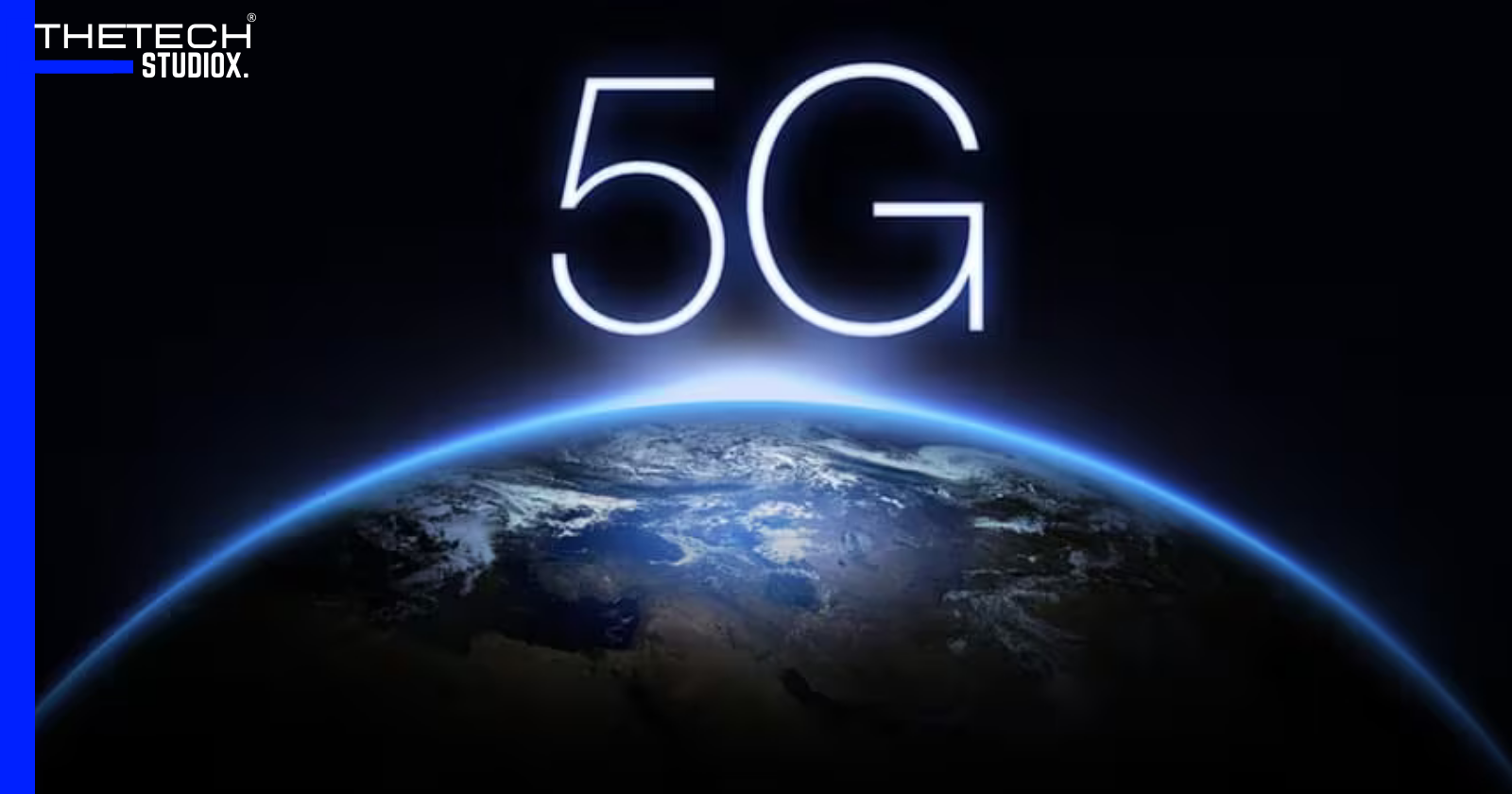Table of Contents
What Is 5G?
The world of technology is rapidly advancing, and one of the most exciting developments is the advent of 5G, the fifth generation of cellular network technology. With promises of faster speeds, lower latency, increased capacity, and enhanced reliability, 5G is set to transform the way we connect, communicate, and interact with the world around us. In this article, we will take a closer look at what 5G is, how it works, and the key benefits it brings to individuals, businesses, and society as a whole.
Understanding 5G Technology
The Evolution of Cellular Networks
Before diving into the specifics of 5G, it’s essential to understand the evolution of cellular networks. The first-generation (1G) networks brought us the ability to make voice calls wirelessly. With the introduction of second-generation (2G) networks, we saw the advent of text messaging and basic data services. Third-generation (3G) networks introduced faster data speeds, enabling internet browsing on mobile devices. Fourth-generation (4G) networks took things a step further, offering even faster speeds and improved connectivity.
The Advancements of 5G
Now, with the arrival of 5G, we are entering a new era of connectivity. 5G offers significant advancements over its predecessors, including:
- Faster Speeds: 5G is up to 100 times faster than 4G, enabling blazing-fast downloads, seamless streaming, and real-time applications. With speeds reaching gigabit per second (Gbps) levels, tasks that used to take minutes or even hours can now be completed in seconds.
- Lower Latency: Latency refers to the time it takes for data to travel from one point to another. 5G drastically reduces latency, enabling near-instantaneous communication between devices. This lower latency is ideal for applications that require real-time responsiveness, such as online gaming, video calls, and autonomous vehicles.
- Increased Capacity: 5G networks have a significantly higher capacity, allowing them to support more devices and users simultaneously. This means fewer network congestion issues and a smoother experience, even in crowded areas or during peak usage times.
- Enhanced Reliability: With improved network stability and reliability, 5G ensures more consistent and dependable connections. This reliability is crucial for applications that require uninterrupted connectivity, such as critical healthcare services and industrial automation.
How 5G Works
Frequency Bands
To understand how 5G works, let’s first take a look at the frequency bands it operates on. 5G utilizes three main frequency ranges:
- Sub-6GHz (Low-Band): This frequency range operates below 6GHz and provides widespread coverage. Low-band frequencies have excellent range and can penetrate obstacles like walls and trees effectively. However, the data speeds in this range may not be significantly faster than 4G/LTE.
- mmWave (Millimeter Wave): mmWave operates at much higher frequencies, typically between 24GHz and 39GHz. While mmWave offers incredibly fast speeds, it has limited range and is easily blocked by obstacles. To provide extensive coverage, thousands of small network cells are required.
- Mid-Band: Mid-band frequencies, such as T-Mobile’s 2.5GHz network and the 3.7GHz to 3.98GHz C-band spectrum licensed by Verizon and AT&T, strike a balance between coverage and speed. These frequencies offer a better range than mmWave and deliver near-gigabit performance levels.
Infrastructure and Technology
To support 5G networks, significant infrastructure upgrades are required. This includes the installation of new cell towers, small cells, and fiber-optic cables to ensure widespread coverage and high-speed connectivity. Additionally, 5G networks rely on advanced technologies such as beamforming and massive multiple-input multiple-output (MIMO) to enhance signal strength and improve network efficiency.
Beamforming allows 5G networks to focus their signals directly towards specific devices, rather than broadcasting signals in all directions. This targeted approach improves signal quality and reduces interference. MIMO technology, on the other hand, utilizes multiple antennas to transmit and receive data simultaneously, increasing network capacity and overall performance.
Network Slicing and Edge Computing
5G introduces the concept of network slicing, which enables the creation of virtual networks tailored to specific use cases. Network slicing allows different industries and applications to have their dedicated slice of the network, ensuring optimal performance and security. For example, a smart city may have a network slice for transportation, healthcare, and public safety, each with its unique requirements and capabilities.
Another critical aspect of 5G is edge computing. Edge computing brings data processing and storage closer to the end users and devices, reducing latency and enabling real-time responsiveness. By processing data at the edge of the network, near where it is generated, applications can deliver near-instantaneous results, making them ideal for time-sensitive tasks such as autonomous vehicles, augmented reality, and industrial automation.
The Benefits of 5G
Faster and More Seamless Connectivity
5G technology offers a host of advantages over its predecessors, with one of the most significant benefits being its ability to provide lightning-fast and seamless connectivity. With speeds that can reach up to a gigabit per second levels, 5G networks enable users to perform a wide range of tasks at lightning-fast speeds, including downloading large files, streaming high-definition videos, and accessing cloud-based applications. This improved speed and responsiveness make it easy for users to access information and applications in real-time, enhancing productivity, entertainment, and overall user experience.
Additionally, with its low latency, 5G technology enables the smooth functioning of applications that require real-time data transfer, such as virtual reality (VR) and augmented reality (AR) applications, making them more immersive and interactive. In summary, the superior speed, responsiveness, and low latency of 5G technology promise to revolutionize the way we interact with our digital devices, opening up a whole new world of possibilities.
Enhanced Mobile Experiences
The fifth generation of wireless technology, commonly known as 5G, has revolutionized the way we experience mobile technology. One of the most exciting aspects of 5G is the potential it holds for augmented reality (AR) and virtual reality (VR) applications. Thanks to its high bandwidth and low latency, 5G enables incredibly immersive AR and VR experiences that were not possible before.
The benefits of 5G extend beyond entertainment and gaming, as it has the potential to transform industries such as education and training. With 5G, virtual tours, interactive training simulations, and other immersive experiences can be created with greater ease and precision. This can lead to more engaging and effective learning experiences for students and professionals alike.
The possibilities are endless with 5G, and it’s exciting to see how this technology will continue to shape our mobile experiences in the years to come.
Advancements in Healthcare
The healthcare industry is poised to experience a significant transformation with the adoption of 5G technology. The fifth generation of wireless technology is designed to provide low latency, high bandwidth, and reliability, making it possible to enable real-time remote monitoring, telemedicine, and remote surgeries.
With 5G, doctors can remotely monitor patients’ vital signs, provide consultations, and even perform surgeries from miles away, reducing the need for physical presence and improving access to healthcare services, particularly in rural or underserved areas. This will result in better healthcare outcomes, increased efficiency, and lower costs for patients and healthcare providers alike. The potential benefits of 5G for healthcare are enormous and are expected to revolutionize the way healthcare services are delivered and accessed in the coming years.
Transforming Industries
5G has the potential to transform various industries, such as manufacturing, transportation, and logistics. With its high capacity and low latency, 5G enables the creation of hyper-connected smart factories, where thousands of sensors and devices can collect real-time data and optimize operations. This data-driven approach improves efficiency, reduces downtime, and enables predictive maintenance.
In the transportation sector, 5G can enhance the safety and efficiency of autonomous vehicles. With its ultra-low latency, vehicles can communicate with each other and with the surrounding infrastructure in real-time, enabling faster response times and safer navigation. Additionally, 5G can support smart traffic systems that optimize traffic flow, reduce congestion, and improve overall transportation efficiency.
Enabling Smart Cities and IoT
5G technology is a crucial element in the advancement of smart cities and the Internet of Things (IoT). It offers greater capacity and the ability to support an enormous number of interconnected devices, making it possible for IoT devices to seamlessly integrate into our daily lives. With 5G technology, smart homes and buildings, intelligent transportation systems, and energy grids can be easily connected and controlled remotely. This technology provides the required connectivity and bandwidth to empower these interconnected systems, making them more efficient and effective.
The Future of 5G
As 5G continues to evolve and expand, we can expect even greater advancements and innovations. From advancements in AI-driven technologies to the proliferation of smart devices and applications, 5G will continue to shape the future of connectivity. The possibilities are vast, and we are only scratching the surface of what 5G can bring.
In conclusion, 5G is poised to revolutionize the way we connect, communicate, and interact with the world. With its faster speeds, lower latency, increased capacity, and enhanced reliability, 5G opens up a world of possibilities for individuals, businesses, and society as a whole. From seamless streaming and downloads to advancements in healthcare, manufacturing, and transportation, 5G is set to transform industries and create a smarter, safer, and more connected future. Stay tuned for the exciting developments that lie ahead as 5G continues to evolve and shape our digital landscape.





[…] With its powerful camera, fast charging capabilities, and sleek design, the Redmi Note 13 Pro Plus 5G is a force to be reckoned with in the mid-range smartphone […]
[…] year, new technologies are emerging that are transforming the way we connect and communicate. From 5G to the Internet of Things (IoT), these innovations are allowing people to connect in new ways, and […]
[…] the advent of 5G technology, smartphone users around the world are experiencing lightning-fast internet speeds and enhanced […]